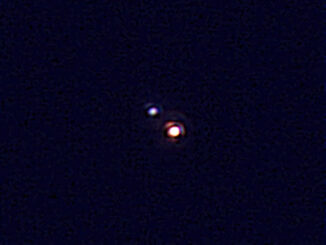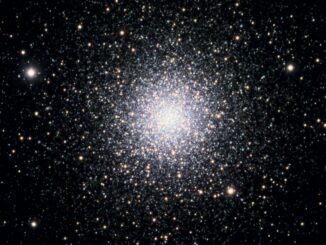
When: throughout the night all month
What’s special: Gamma (γ) Leonis (Algieba) is one of the best double stars in the entire sky and makes a superb introduction for beginners yet to sample the delights of double-star observing. Being Leo’s second-brightest star, Algieba, whose components shine with a combined magnitude of +2, is easy to find with the naked eye. Point – a small telescope its way and you’ll be treated to the exceptionally fine sight of as near as one can get to a pair of golden stars that are easily split at moderate- to high-power, unless the seeing is dismally poor.
How to observe: Algieba was identified as double by William Herschel in 1782. Gamma-1 is a magnitude +2.3 class K1 giant star, with a fainter (magnitude +3.6) companion that’s classed as a G7 giant. The pair lie about 126 light years away and orbit around a common centre of gravity in a highly eccentric, 510-year orbit; at their closest, the pair lie just 26 astronomical units (AU) apart, pulling out to 313 AU when at their greatest separation.
Algieba’s orbital period is so long that astronomers have observed only a fraction of Algieba’s orbit; perhaps insufficient time has elapsed so far to be totally confident of its parameters. It’s calculated that the pair were last at their closest in 1671, their separation slowly increasing ever since.
A 80mm (~three-inch) telescope operating at moderate power is sufficient to resolve this exceptionally pretty pair, with both components, currently separated by 4.6 arcseconds, presenting with a beautiful, orange-yellow hue. The secondary has been reported as revealing a greenish hue in observations made through larger- aperture telescopes.
Algieba forms part of the famous ‘Sickle’ asterism of bright stars that lie in western Leo, and is often described as a backwards question mark (first-magnitude Regulus represents the ‘full-stop’). At mid-month, it crosses the southern meridian (culminates) at about 10.45pm GMT at a very favourable altitude of in excess of 53 degrees.



